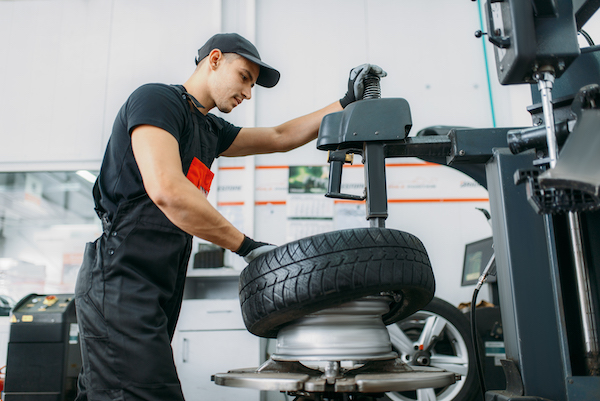Don't Lose Out on Mopar Tire Service Specials: Budget-friendly Maintenance Bundles
Don't Lose Out on Mopar Tire Service Specials: Budget-friendly Maintenance Bundles
Blog Article
Tire Service: The Impact of Climate Condition
When it comes to making certain optimum efficiency and safety and security on the road, recognizing the impact of weather conditions on tire solution is critical. In this conversation, we will certainly explore the detailed partnership between weather conditions and tire service, shedding light on the relevance of weather-specific tire maintenance methods and considerations.
Warmth and Tire Efficiency
When revealed to heats, tires experience modifications in efficiency that can dramatically affect vehicle safety and security and handling. The heat produced from prolonged driving or hot climate conditions triggers the tire rubber to soften, causing lowered step life and increased wear. As the rubber becomes softer, the tire's grip on the roadway lessens, influencing braking ranges and overall grip. In extreme cases, extreme heat can even cause tire blowouts, positioning an extreme safety threat to the lorry and its occupants.
Furthermore, heats can increase the procedure of tire aging, triggering the rubber to degrade faster. This can cause splits, bulges, and various other kinds of damages that jeopardize the structural integrity of the tire. To reduce the results of heat on tire performance, motorists ought to routinely inspect their tire stress, revolve tires to make certain even wear, and check for any indicators of damages. In addition, using tires especially made to stand up to high temperature levels can help preserve optimal performance and security when traveling.
Cold Climate Impacts
Cold weather condition problems can have a considerable effect on tire performance and safety and security. As temperatures decline, tire rubber can solidify, causing decreased traction on icy or snow-covered roadways. In cool weather condition, tires may additionally shed air stress extra rapidly, which can impact handling and gas efficiency. Furthermore, chilly temperature levels can create tire sidewalls to stiffen, enhancing the danger of damage from fractures or various other road hazards.
To minimize the results of chilly climate on tires, it is crucial to on a regular basis examine tire stress and inflate them to the supplier's recommended degrees. Making use of wintertime or all-season tires designed for cool weather problems can also boost traction and grip on icy or snowy roadways - morris tire and alignment. Proper tire upkeep, including regular assessments for wear and damages, becomes a lot more essential during colder months to make certain ideal efficiency and safety and security
Rainy Conditions Effect
During stormy problems, tire performance and safety can be considerably affected by the damp road surface areas and decreased presence. The walk pattern of tires plays a crucial role in maintaining traction on wet roadways. Tires with worn-out footsteps are much more vulnerable to morris tire and alignment hydroplaning, where a layer of water accumulates in between the tire and the roadway surface, leading to loss of grip. To battle this, drivers ought to consistently check their tires for sufficient step deepness and take into consideration buying tires specifically designed for damp conditions.

Snow and Tire Security
When driving in snowy conditions, having the right tires can make a substantial difference in security and efficiency. Winter months tires are developed with special rubber compounds and step patterns to supply much better grip on snow and ice contrasted to all-season tires.
In addition to making use of winter tires, it is important to guarantee they are properly blown up. Cold weather can create tire stress to go down, affecting grip and handling (morris tire and alignment). Frequently examining and keeping the proper tire pressure is essential for optimum efficiency in snowy problems

Weather-Related Tire Upkeep
Weather-related tire maintenance incorporates a range of techniques intended at making sure ideal tire function and durability in different climate circumstances. One key element of weather-related tire maintenance is tire pressure law. Inspecting tire tread routinely and replacing tires when walk wear reaches a certain depth is vital for keeping grip and stability in adverse weather condition.
Final Thought
In conclusion, weather condition problems have a substantial influence on tire performance and safety (tire shop morris). From warmth influencing tire pressure and put on to cold weather decreasing traction, it is vital to think about the weather when keeping and utilizing tires.
In this discussion, we will certainly discover the intricate relationship in between weather conditions and tire service, shedding light on the importance of weather-specific tire upkeep methods and factors to consider.

Report this page